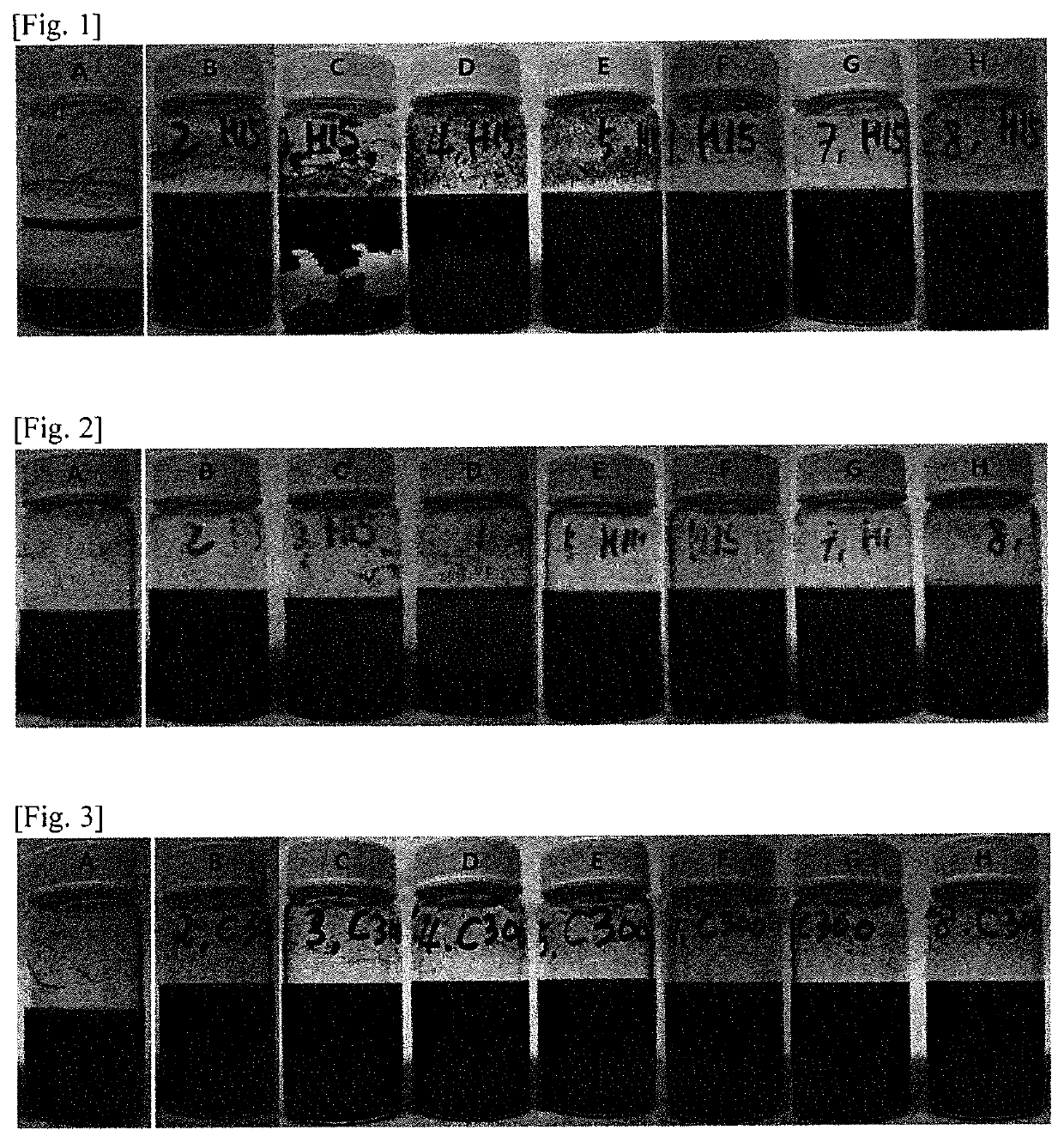Noncovalent bond-modified carbon structure, and carbon structure/polymer composite comprising same
a carbon structure and non-covalent bond technology, applied in the direction of electrically conductive paints, coatings, chemistry apparatuses and processes, etc., can solve the limitation of composite properties, the inability to realize intrinsic properties of carbon structures, and the inability to achieve intrinsic properties, etc., to achieve uniform dispersion in a polymer matrix, facilitate the control of properties, and simple manufacturing
- Summary
- Abstract
- Description
- Claims
- Application Information
AI Technical Summary
Benefits of technology
Problems solved by technology
Method used
Image
Examples
examples 1 to 8
PREPARATIVE EXAMPLES 1 TO 8
Preparation of a Solution in which a Compound Represented by Chemical Formula 1 is Dissolved
[0103]As shown in the following Table 1, a compound represented by Chemical Formula 1 was dissolved in methanol (20 mL) and a solution in which the compound of Chemical Formula 1 was dissolved was prepared. In this case, in the case of preparative Example 5, it was seen that the compound was precipitated due to supersaturation.
[0104]
TABLE 1concentrationaddedof solutioncompound structureamount (g)(M)Preparative Example 1 Preparative Example 2 Preparative Example 3 Preparative Example 40.00492 0.00984 0.01476 0.02460 0.01 0.02 0.03 0.05 Preparative0.0492 0.10Example 5Preparative Example 6 0.01152 0.02 Preparative Example 7 0.009280.02 Preparative Example 8 0.00868 0.02
examples 9 to 10
PREPARATIVE EXAMPLES 9 TO 10
Preparation of a Carbon Structure Suspension
[0105]Graphene nanoplatelets used as a carbon structure were purchased from XG Sciences Co. in two forms including a granule type (Grade H, oxygen content: about 1% by weight or less, a specific surface area: 50 to 80 m2 / g, and an average thickness: about 15 nm) and a granule / powder type (Grade C, oxygen content: about 8% by weight or less, a specific surface area: about 750 m2 / g, and an average thickness: about 5 nm or less). Each of the graphene nanoplatelets was added in a mixed solvent of methanol / water (1 / 3, v / v) (10 mL) in an amount of 0.05 g, and then ultrasonic waves were irradiated for an hour and a half to prepare a carbon structure suspension.
embodiment example 1
Preparation 1 of a Noncovalent Bond-modified Carbon Structure
[0106]A noncovalent bond-modified carbon structure was prepared by mixing a solution prepared in Preparative Example 1 and a suspension (Grade H suspension) prepared in Preparative Example 9, and irradiating ultrasonic waves at 50° C. for 6 hours.
PUM
| Property | Measurement | Unit |
|---|---|---|
| thickness | aaaaa | aaaaa |
| thickness | aaaaa | aaaaa |
| electrical conductivity | aaaaa | aaaaa |
Abstract
Description
Claims
Application Information
 Login to View More
Login to View More - R&D
- Intellectual Property
- Life Sciences
- Materials
- Tech Scout
- Unparalleled Data Quality
- Higher Quality Content
- 60% Fewer Hallucinations
Browse by: Latest US Patents, China's latest patents, Technical Efficacy Thesaurus, Application Domain, Technology Topic, Popular Technical Reports.
© 2025 PatSnap. All rights reserved.Legal|Privacy policy|Modern Slavery Act Transparency Statement|Sitemap|About US| Contact US: help@patsnap.com



